Description
The instruction for medical use
of CO-PRENESSA® medicine
Trade name
КО-ПРЕНЕССА®
the International unlicensed name
Is not present
the Dosage form
of the Tablet of 8 mg / 2.5 mg
Structure
One tablet contains
active agent – a perindopril erbumin 8 mg,
indapamid 2.5 mg
excipients: Calcii chloridum hexahydrate, lactoses
monohydrate, krospovidon, cellulose microcrystalline, Natrii hydrocarbonas, silicon the dioxide colloidal hydrated magnesium stearate
the Description
of the Tablet of round shape of white or almost white color, slightly biconvex, with risky on one party.
Pharmacotherapeutic group
the Drugs influencing a system renin-angiotensin.
AKF inhibitors in a combination with other drugs. Perindopril in a combination with diuretics.
The Pharmacological
Pharmacokinetics Pharmacokinetic Indicators properties of the fixed combination perindoprit the ATX C09BA04 code and an indapamida do not differ in comparison with their separate use.
Perindopril after intake is soaked up quickly from digestive tract, the maximum concentration is reached within 1 hour. The half-life period of a perindopril in blood plasma is 1 h
Perindopril is pro-medicine. 27% of the accepted dose of a perindopril reach a blood-groove in the form of an active metabolite – the perindoprilat. Except
the active perindoprilat, perindoprit forms five inactive metabolites. The maximum concentration of the perindoprilat in plasma are reached within 3-4 hours.
Meal reduces transformation in perindoprilat and consequently, and bioavailability. The maintenance of a perindopril in plasma is linearly dependent on a dose.
The volume of distribution is about 0.2 l/kg for the untied perindoprilat. Linking of the perindoprilat with proteins of plasma makes 20%, generally about the angiotensin-the converting enzyme (ACE). Perindoprilat is brought with urine, final elimination half-life of untied fraction makes about 17 hours that leads to a stable state within 4 days.
Removal of the perindoprilat is reduced at elderly patients and also at patients with a heart or renal failure.
In a renal failure, depending on extent of deterioration, it is desirable to carry out correction of a dose.
The clearance of dialysis of the perindoprilat is equal to 70 ml/min.
The kinetics of a perindopril differs at patients with cirrhosis: the hepatic clearance decreases half, however the number of the formed perindoprilat does not decrease and therefore to adjust a dose there is no need.
Indapamid is quickly and completely soaked up from a digestive tract.
The maximum concentration in plasma is reached approximately during 1 h after administration of drug inside. Linking with proteins of blood plasma makes 79%.
Elimination half-life makes from 14 to 24 hours (on average 18 hours). Repeated reception does not lead to cumulation. Removal generally happens to urine (70% of a dose) and a stake (22%) in the form of inactive metabolites.
The pharmacokinetics at patients with a renal failure remains invariable
the Pharmacodynamics
of Co-Prenessa® is a combination is grated – butylamine salt of a perindopril – AKF inhibitor and an indapamid – chlorsulphamide diuretic. Its pharmacological properties depend on each component taken separately plus additive synergistic effect of two drugs in a combination.
Perindopril is AKF inhibitor which turns angiotensin I into angiotensin II – vasoconstrictive substance. Besides, enzyme stimulates development of Aldosteronum with bark of adrenal glands and bradykinin degradation – vasodilating substance – on inactive heptapeptides.
Decrease in development of Aldosteronum, increase in activity of renin of plasma as Aldosteronum does not strengthen negative feedback results. At long-term treatment the decrease in the general peripheric resistance of vessels with primary action on sosudist a bed of muscles and kidneys is observed, at the same time there is no delay of salts and water or reflex tachycardia.
Antihypertensive action of a perindopril is also shown at patients with low or normal concentration of renin.
Action of a perindopril is caused by activity of a metabolite of the perindoprilat. Other metabolites are not active. Perindopril reduces load of heart, having vasodilating effect on veins, (possibly, by change of metabolism of prostaglandins) and by means of decrease in the general peripheric resistance of vessels (GPRV) reduces an afterload.
At patients with heart failure perindoprit reduces the filling pressure of the left and right ventricle, reduces OPSS, increases warm emission (improving thereby cardiac index), increases a local blood stream in muscles. As a result considerably results of exercise tolerance test improve.
Perindopril is active at all degrees of hypertensia: easy, moderate and heavy.
Decrease in systolic and diastolic arterial blood pressure are observed at patients both in a prone position, and in a standing position. The maximum antihypertensive activity after a single dose is from 4 to 6 hours and remains within 24 hours. There is high extent of residual blocking of AKF in 24 hours (about 80%). At the reacted patients the normalized arterial blood pressure is reached in one month and remains without tachyphylaxis. The termination of treatment has no converse effect in hypertensia.
Perindopril has vasodilating properties, restores elasticity of the main arterial trunks, adjusts gistomorfometrichesky changes of resistance of arteries and leads to decrease in a hypertrophy of a left ventricle. If necessary addition of thiazide diuretics gives additive synergetic effect.
The AKF inhibitor combination with thiazide diuretic reduces the risk of development of a hypopotassemia connected with intake of only one
Indapamid diuretic is derivative sulphamide with an indole ring, pharmacological belongs to thiazide group of diuretics. Indapamid inhibits a sodium reabsorption in the cortical parting segment. It increases removal of sodium and chlorides with urine and to a lesser extent discharge of potassium and magnesium, thereby increasing an exit of urine and having antihypertensive effect.
Connected with Co-Prenessa®:
At hypertensive patients, irrespective of age, medicine has antihypertensive effect, depending on a dosage, on diastolic and systolic arterial blood pressure, in a prone position or standing.
The antihypertensive effect lasts till 24 o’clock. Decrease in aretrialny pressure is reached less than in one month, without tachyphylaxis, the termination of treatment does not cause a withdrawal.
The concomitant use of a perindopril and an indapamid has antihypertensive effect of synergetic character in relation to each of the drugs accepted separately.
At hypertensive patients with a hypertrophy of a left ventricle of Co-Prenessa® in a dosage of 8 mg / 2.5 the mg considerably reduces the index of mass of a left ventricle (IMLV).
Indications
– as replacement therapy for treatment of essential hypertensia at patients at whom the ABP is already controlled perindoprily and indapamidy, appointed at the same time at the same level of doses
the Route of administration and doses
For intake.
The usual dose makes one tablet of 8 mg/2.5 mg Co-Preness ® in day which is preferable for accepting in the morning before meal.
Elderly patients
At elderly patients creatinine in plasma has to be corrected depending on age, weight and a floor. Treatment of elderly patients can be begun if the functional condition of kidneys is normal, after control of the ABP.
Patients with a renal failure
At patients with heavy and average degree of a renal failure (КК<, 60 ml/min.): see the section Contraindications.
At patients with clearance of creatinine is higher or the equal 60 ml/min. of changes of a dosage are not required. Usual subsequent medical observation has to include monitoring of levels of creatinine and potassium in a week after an initiation of treatment, and then – in 2-3 months
Patients with a liver failure
At patients from heavy hepatic insufficiency: see the section Contraindications.
With average degree of a liver failure of changes of a dosage it is not required from patients.
Duration of the Co-Prenessa drug treatment ® is corrected by the attending physician.
Children and
Co-Preness’s teenagers ® tablets 8 mg/2.5 of mg are not recommended to be applied at children and teenagers as the efficiency and shipping perindoprit in monotherapy or in a combination it is not established.
Side effects
Often (³1/100 to & lt, 1/10):
– disorders of vision
– a ring in ears
– hypotension orthostatic or other
– the dry cough disappearing after the treatment termination. In the presence of
this symptom it is necessary to consider an iatrogenic etiology
– pharyngitis, rhinitis, sinusitis
– dispnoe
– a constipation, dryness in a mouth, nausea, pains in epigastric area,
an abdominal pain, disturbances of flavoring feelings, vomiting, dyspepsia, a constipation or
diarrhea, loss of appetite
– rash, an itching, makulopapulezny rash
– muscular spasms
Infrequently (³1/1.000 to & lt, 1/100):
– a bronchospasm
– hypersensitivity reactions, generally dermatological
at patients with predisposition to allergic and asthmatic
reactions
– a purpura
– possible aggravation of earlier existing disseminate
lupus erythematosus
– a renal failure
– impotence
– perspiration
– decrease in level of potassium with extremely serious lowering at some
category of patients with risk
– decrease in level of sodium with a hypovolemia, defiant dehydration
and orthostatic hypotension
– increase in level of uric acid and glucose in blood (during treatment)
– the insignificant increase in urea and creatinine in blood plasma
restored after the treatment termination
– increase in level of potassium, usually passing
– a proteinuria
Seldom (³1/10000 to & lt, 1/1000):
– disturbances of mood or a dream
– a headache, feeling of dizziness, nervousness, vertigo
– spasms, paresthesia
– an asthenia
– increase in level of calcium in blood plasma
is Very rare (& lt, 1/10000):
– thrombocytopenia, leukopenia/neutropenia, agranulocytosis, aplastic
anemia, hemolytic anemia.
– anemia at the patients who transferred transplantation of kidneys, the patients
who are on a hemodialysis
– confusion of consciousness
– arrhythmia, including bradycardia, the ventricular tachycardia, fibrillation
of auricles, stenocardia and a myocardial infarction perhaps secondary
in relation to excess hypotension at patients of group of high risk
– eosinophilic pneumonia
– pancreatitis
– a cholestasia or cytolytic hepatitis
– risk of developing hepatic encephalopathy in the presence of a liver
failure
– a Quincke’s disease of the face, extremities, lips, a mucous membrane,
language, a glottis and/or throat, urtikarny rash
– various an erythema, a toxic epidermal necrolysis,
Stephens-Johnson’s syndrome
– reactions of photosensitivity
– an acute renal failure
of the Contraindication
– hypersensitivity to a perindopril, an indapamid,
AKF inhibitors and sulfonamides and to any excipients
– a Quincke’s disease (Quincke’s edema) in the anamnesis connected with
earlier carried out therapy by AKF inhibitors
– a hereditary or idiopathic angioedema
– a renal failure of heavy and average degree (КК<, 60 ml/min.)
– the patients who are on a hemodialysis
– hepatic encephalopathy
– patients, with incurable dekompensirovanny heart
failure
– a concomitant use of antiarrhytmic means which can cause
ventricular arrhythmia like pirouette
– pregnancy and the period of a lactation
– children’s and teenage age up to 18 years (due to the lack of data on
safety and efficiency of medicine)
Medicinal interactions
At simultaneous use of lithium and AKF inhibitors were observed cases of reversible increase in concentration of lithium in serum and toxicity. Simultaneous use of thiazide diuretics can increase further levels of lithium and enhance risk of lithium toxicity. Use of a perindopril in a combination with indapamidy and lithium is not recommended, but if the combination is considered necessary, it is necessary to carry out careful monitoring of levels of lithium in serum.
Baclofenum exponentiates antihypertensive effect of AKF inhibitors. It is necessary to carry out monitoring of the ABP and function of kidneys and also adaptation of a dose of antihypertensive drug.
With non-steroidal anti-inflammatory drugs (for example. weakening of antihypertensive action can happen acetylsalicylic acid in an anti-inflammatory dosage, TsOG-2 inhibitors and non-selective NPVP). Simultaneous use of AKF and NPVP inhibitors can lead to increase in risk of a renal failure, including a possible acute renal failure and also to increase in serumal potassium, especially at patients with already existing impaired renal function. The combination should be applied with care, especially at elderly patients. Patients should accept necessary amount of liquid and it is necessary to pay attention to control of function of kidneys after the beginning of joint treatment, and periodically after an initiation of treatment.
Imipraminum type antidepressants (tricyclic antidepressants), neuroleptics enhance antihypertensive effect and risk of developing orthostatic hypotension (additive effect).
Corticosteroids, tetrakozaktida reduce antihypertensive effect (a delay of salt and water as a result of reception of corticosteroids).
Use of other antihypertensive medicines with perindoprilom/indapamidy can result in effect of additional decrease in the ABP.
AKF inhibitors reduce the potassium losses caused by diuretics. Kaliysberegayushchy diuretics, for example Spironolactonum, Triamterenum or amiloride, potassium additives or kaliysoderzhashchy substitutes of salt can lead to significant increase in serumal potassium (potentially lethal). If simultaneous use is appointed in connection with the established hypopotassemia, they should be taken with caution and at frequent control of serumal potassium and the ECG.
Use of AKF inhibitors can increase hypoglycemic effect at the diabetics receiving treatment by insulin or hypoglycemic sulphamides. Hypoglycemic states come very seldom (improvement of tolerance of glucose with the subsequent decrease in needs for insulin)
Allopyrinolum, cytostatic or immunodepressive agents, system corticosteroids (systematic reception) or procaineamide at joint reception with AKF inhibitors can increase risk of development of a leukopenia.
AKF inhibitors can strengthen hypotensive effect of some anesthetizing drugs.
Preliminary treatment by high doses of diuretics can lead to decrease in volume of blood and risk of hypotension at the beginning of therapy perindoprily.
At combined use of drugs of gold (sodium aurotiomalat) and AKF inhibitors nitritoidny reactions (face reddening, nausea, vomiting and hypotension) were seldom observed.
Due to the risk of development of a hypopotassemia, indapamid it is necessary to apply with care in combination with drugs which cause torsade de pointes, such as: antiarrhythmic drugs of the class IA (quinidine, hydroquinidine, Disopyramidum), antiarrhythmic drugs of class III (Amiodaronum, dofetilid, ibutilid, a bretylium, sotalol), some neuroleptics (Chlorpromazinum, tsiamemazin, levomepromazinum, thioridazine, trifluoperazin), benzamides (amisulprid, Sulpiridum, sultoprid, tiaprid), phenyl propyl ketones (Droperidolum, a haloperidol), other neuroleptics (Pimozidum), other substances, such as bepridit, tsisaprid, difemanit, erythromycin IV, galofantrin, mizolastin, moxifloxacin, pentamidine, sparfloksatsin, Vincaminum IV, methadone, astemizol, terfenadin. Prevention of decrease in level of potassium, monitoring of QT of an interval, if necessary – dose adjustment is necessary.
The drugs reducing the potassium level, Amphotericinum B (in / c), system glucocorticoids and mineralokortikoida (system use), the tetrakozaktida stimulating depletive increase risk of decrease in level of potassium (additive effect) in this connection careful monitoring of level of potassium and correction of doses is necessary, the special attention is required in treatment cases by a foxglove glycoside. Use of the stimulating depletive is forbidden.
Low level of potassium favors to toxic influence of heart glucosides in this connection it is necessary to carry out monitoring of level of potassium and the ECG, and/or, if necessary, to reconsider treatment.
Laktotsidoz in connection with metmorfiny, caused by a possible functional renal failure, is connected with loopback diuretics. It is impossible to apply metmorfin at creatinine level in plasma higher than 15 mg/l (135 mikromol/l) at men and 12 mg/l (110 mikromol/l) is at women.
In cases when dehydration is caused by diuretics, there is an increased risk of an acute renal failure, especially when using high doses of the iodated contrast agent. Before introduction of the iodated structure it is necessary to carry out restoration of volume of liquid.
Salts of calcium increase calcium level in connection with reduced removal of calcium with urine.
Cyclosporine increases risk of increase in level of creatinine without change of the circulating cyclosporine level even if there is no decrease in salt or water.
Special instructions
At low – the dosed combination Кo-Пренесса® 2mg/0.625 no considerable decrease in adverse side reactions on medicine in comparison with the minimum resolved doses of individual monocomponents, except for a hypopotassemia, were observed by mg. Increase in frequency of emergence of idiosyncratic reactions cannot be an exception if the patient is exposed to simultaneous influence of two antihypertensive drugs which are for it new. For minimization of this risk the condition of the patient needs to be controlled carefully.
The combination of drugs of lithium and a combination perindopril/indapamid is not recommended.
At the patients receiving AKF inhibitors cases of a neutropenia / agranulocytosis, thrombocytopenia and anemia were noted. At patients with normal function of kidneys and without existence of other complicating factors the neutropenia arises seldom.
Perindopril it is necessary to apply with extra care at patients with a collagenic disease of the vessels receiving immunosuppressive therapy, treatment by Allopyrinolum or prokainomidy, or a combination of these complicating factors, especially, if there is already a deterioration in function of kidneys.
At development of a Quincke’s disease of the face, extremities, lips, language, a glottis and/or throat it is necessary to stop reception of a perindopril immediately.
The Quincke’s disease connected with a laryngeal edema can be deadly. In cases when swelled touches language, a throat or a glottis that can possibly cause obstruction of airways, it is necessary to take immediately the appropriate measures which can include hypodermic administration of solution of epinephrine 1:1000 (from 0.3 ml to 0.5 ml) and/or actions for restoration of breath of the patient.
The intestinal angioedema meets at the patients receiving AKF inhibitors seldom and has to be included in the differential diagnosis of the patients with stomach aches receiving AKF inhibitors.
AKF inhibitors should be applied with care at the patients with an allergy receiving desensitization treatment and it is not necessary to apply at the patients passing an immunotherapy poisons. At those patients for whom both AKF inhibitors and treatment of desensitization are required it is necessary to stop temporarily intake of AKF inhibitors at least in 24 hours prior to desensitization treatment.
The life-threatening anaphylactoid reactions arising in rare instances at the patients accepting AKF inhibitors at an afereza lipoproteins of low density with dextran sulfate were eliminated with the temporary termination of intake of AKF inhibitors before each aferez.
Cases of anaphylactoid reactions were noted at patients to whom dialysis by membranes with high hydraulic permeability was carried out (for example, AN 69®) and at the same time receiving AKF inhibitor. At these patients special attention needs to be paid on use of other type of a dialysis membrane or other class of antihypertensive drug.
The combination perindoprit also kaliysberegayushchy diuretics, salts of potassium are not recommended.
At the broken function of a liver the thiazide diuretics and diuretics relating to thiazide can lead to hepatic encephalopathy. In this case intake of diuretics needs to be stopped immediately.
At emergence of reaction of photosensitivity, it is recommended to stop treatment, in need of repeated reception it is recommended to protect the zones which are affected by sunshine or artificial ultraviolet.
In cases of a heavy and moderate renal failure (KK & lt, 60 ml/min.) treatment is contraindicated.
At some hypertensive patients with impaired renal function, treatment needs to be stopped, and it is possible to renew or in a low dose, or only with one component. For such patients the usual subsequent medical observation has to include frequent monitoring of potassium and creatinine, after two weeks of treatment, and then each two months during the period of therapeutic stability.
Cases of a renal failure were observed generally at patients with heavy
heart failure or a basic renal failure, including a renal artery stenosis.
Drug is not recommended in cases of a bilateral stenosis of renal arteries or the only functioning kidney.
There is a risk of sudden hypotension in the presence of earlier existing deficiency of sodium (in particular, at patients with a renal artery stenosis). Therefore it is necessary to carry out systematic control of manifestation of clinical signs of water and electrolytic exhaustion which can result from diarrhea or vomiting. At such patients it is necessary to carry out regular monitoring of electrolytes in plasma. The profound hypotension can demand intravenous administration of normal saline solution. Passing hypotension is not a contraindication for treatment continuation. After restoration of satisfactory volume of blood and the ABP, treatment can be started over again or in a reduced dose, or with one of components.
The combination perindoprit and the indapamida does not prevent risk of emergence of a hypopotassemia, especially at patients with diabetes or at patients with a renal failure in this connection it is necessary to carry out regular monitoring of level of potassium in plasma.
It is not necessary to use the drug Ko-Prenessa® at patients with rare hereditary intolerance of a galactose, congenital insufficiency of lactase and disturbance of absorption of glucose galactose
When using AKF inhibitors noted cases of developing of dry cough which passes after the treatment termination.
The significant stimulation renin-angiotensin-aldosteronovoy of a system was observed at the significant disturbances of water and electrolytic balances (a rigid saltless diet or long-term treatment by diuretics) at patients with initially low arterial blood pressure, in cases of a renal artery stenosis, stagnant heart failure or cirrhosis with hypostasis and ascites. Therefore blocking of this system AKF inhibitors can lead, especially at the first reception and within the first two weeks of treatment, to sudden decrease in the ABP and/or increase in plasma of levels of creatinine that testifies to a functional renal failure. In such cases the treatment should be begun with lower dose and with gradual increase.
Patients with coronary heart disease or insufficiency of cerebral circulation need to appoint treatment from a low dose.
Elderly patients: before an initiation of treatment it is necessary to check the level of potassium and function of kidneys. The initial dose is adjusted dependences on the level of decrease in the ABP, especially in cases of a water and electrolytic imbalance, in order to avoid the sudden beginning of hypotension subsequently.
AKF inhibitors can have bigger advantage at patients with renovascular hypertensia to whom reconstructive operation is necessary, or in cases when carrying out such operation is impossible.
Co-Preness of 8mg/2.5 mg is not recommended at patients with the available or expected renal artery stenosis as treatment needs to be begun in the conditions of a hospital with lower dose, than Co-Preness of 8mg/2.5 mg.
At patients with heavy heart failure (IV degrees) or patients with insulin-dependent diabetes (tendency to spontaneous increase in level of potassium) the treatment should be begun under medical control with a reduced initial dose therefore Кo-Пренесса® 8mg/2.5 mg are not acceptable for an initial dose. Treatment by beta-blockers of hypertensive patients with coronary insufficiency does not need to be stopped: AKF inhibitor needs to be added to beta-blockers.
At the patients with diabetes who were earlier accepting treatment by oral anti-diabetic drugs or insulin it is necessary to control carefully glycemia level, namely during the first month of treatment by AKF inhibitor.
Action of a perindopril in decrease in the ABP is less effective at patients of negroid race, than at others probably because of more frequent distribution of a lowrenine form of hypertensia among the black population.
AKF inhibitors can become the cause of hypotension in anesthesia cases, especially when the applied anesthetic is drug with hypotensive action in this connection treatment by long operating AKF inhibitors, such as perindoprit, was stopped, in one day prior to operation.
AKF inhibitors should be applied with care at patients with narrowing of output department of a left ventricle.
In rare instances AKF inhibitors connect with a syndrome of the cholestatic jaundice progressing to transient necrosis of a liver and (sometimes) leading to death. The mechanism of this syndrome is not clear. The patients receiving AKF inhibitors at which jaundice or the significant increases in liver enzymes develops should stop intake of AKF inhibitors and to be under the corresponding subsequent medical observation.
At some patients receiving treatment by AKF inhibitors, including perindoprit, increase in level of serumal potassium was observed. Risk factors of development of a hyperpotassemia include a renal failure, deterioration in function of kidneys, advanced age (70 years), diabetes, the passing states, in particular, dehydration, an acute heart failure, a metabolic acidosis and a concomitant use potassium – the preserving diuretics (for example, Spironolactonum, an eplerenon, Triamterenum or amiloride) are more senior, than potassium additives or kaliysoderzhashchy substitutes of salt, or the patients taking other medicine connected with increase in serumal potassium (for example, heparin). Use of potassium additives, kaliysberegayushchy diuretics or kaliysoderzhashchy substitutes of salt at patients with the worsened function of kidneys can lead to significant increase in serumal potassium that can become the reason serious, sometimes fatal arrhythmias.
Before an initiation of treatment, and then periodically during treatment the control of level of sodium as any diuretic treatment can lead to decrease in level of sodium which at the beginning can happen asymptomatically is necessary, but can have serious consequences. Regular control of sodium needs to be carried out more often at elderly patients and patients with cirrhosis.
Decrease in level of potassium with a hypopotassemia are the main risk of the thiazide diuretics and diuretics connected with tiazida. It is necessary to prevent risk of development of decrease in level of potassium (& lt, 3.4 µмоль/л) at patients with high risk, such as elderly and/or patients with poor nutrition, with the cirrhosis which is followed by hypostasis and ascites, coronary and heart failure. The hypopotassemia increases cardiotoxicity of cardiac glycosides and risk of arrhythmia.
Patients with the extended QT interval also have a risk of decrease in level of potassium, irrespective of origin (inborn or iatrogenic). The hypopotassemia, as well as bradycardia, is a factor which favors to the beginning of serious violations of a rhythm, in particular, torsades de pointes which can be deadly.
In all cases more frequent monitoring of level of potassium is necessary. The first measurements of level of potassium in plasma should be taken within the first week after an initiation of treatment. At detection of low level of potassium in plasma the correction of a dose is necessary.
The thiazide diuretics and diuretics connected with tiazida can reduce removal of calcium with urine and to become the reason of passing increase in level of calcium in plasma. The significant increase in level of calcium can be the cause of an unspecified hyper parathyroidism in this connection treatment needs to be stopped before inspection of function of an epithelial body.
Monitoring of level of glucose in blood it is necessary for diabetic patients, especially at the low level of potassium.
At patients with a hyperuricemia gout attacks can amplify.
The thiazide diuretics and diuretics connected with tiazida are completely effective only in case of the normal or reduced in easy degree functioning of kidneys (levels of creatinine are lower, than about 25 mg/l, i.e. 220µмоль/л at the adult).
At elderly patients the value of level of creatinine in plasma should be adjusted taking into account age, weight and a sex of the patient according to a formula Kokrofta:
klkr = (140 – age) x body weight / 0.814 x the level of creatinine in plasma
(the age is significant advanced in years, body weight – in kg, creatinine level in plasma – in mikromolyakh/l) /
This formula is suitable for elderly men and has to adapt for women by multiplication of result by 0.85.
The hypovolemia caused by loss of water and sodium as a result of intake of diuretic in an initiation of treatment leads to decrease in glomerular filtration that can cause increase in levels of urea and creatinine in blood. This temporary functional renal failure has no adverse effects for patients with normal work of kidneys, but can worsen already available renal failure.
Features of influence of medicine on ability to run the vehicle or potentially dangerous mechanisms
are In certain cases possible the individual reactions connected with change of the ABP, especially in an initiation of treatment or at addition of other antihypertensive drug therefore the ability to driving and work with the mechanisms requiring special attention and speed of psychomotor reactions can decrease.
Overdose
Symptoms: significant decrease in the ABP, nausea, vomiting, spasms, dizziness, insomnia, polyuria or oliguria, anury, bradycardia, disturbance of water and electrolytic balance.
Treatment: gastric lavage and/or appointment is activated
to Develop





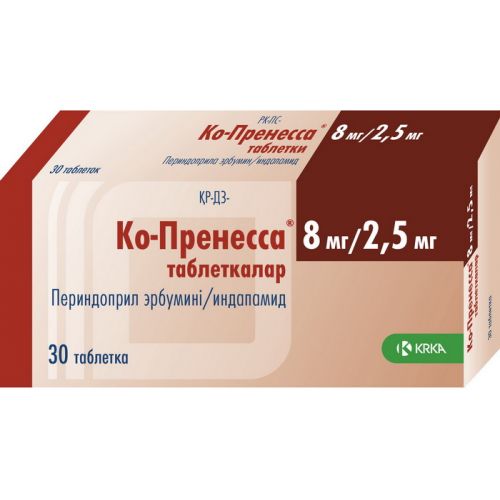
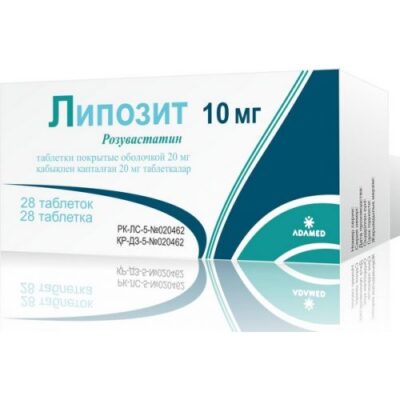
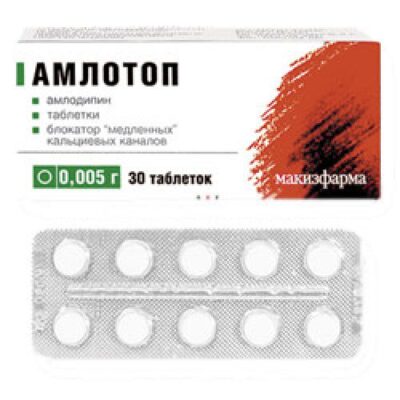
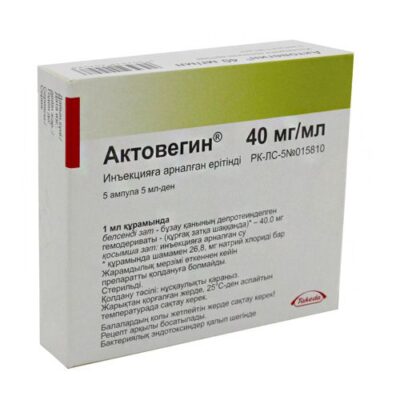
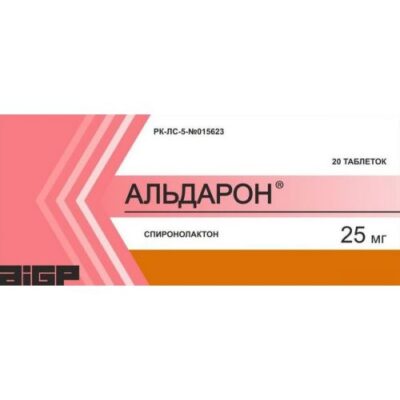
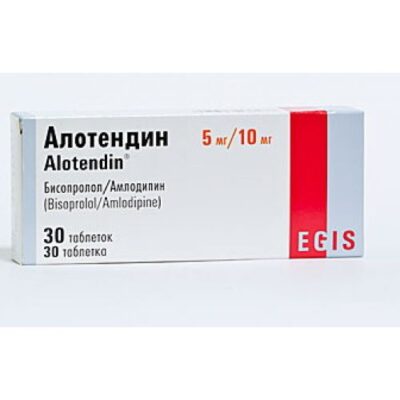
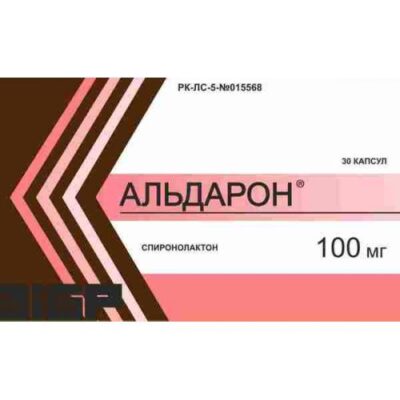
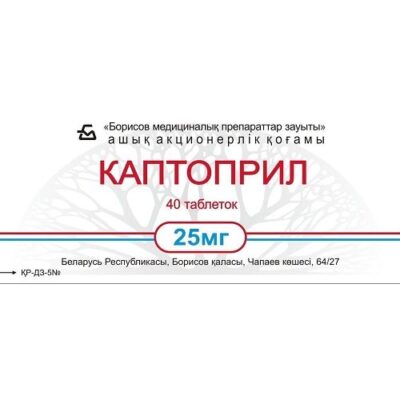
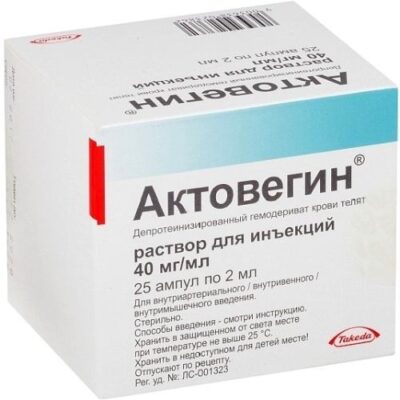
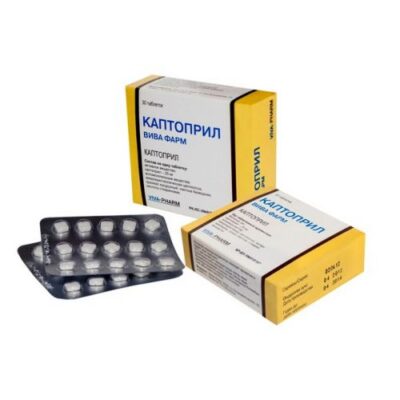
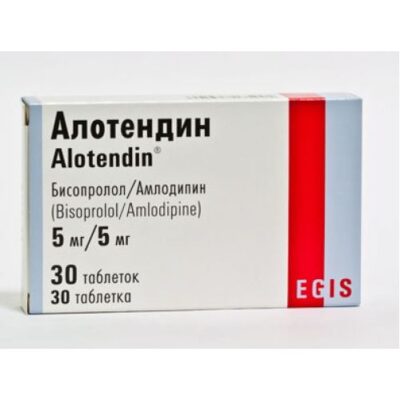






Reviews
There are no reviews yet.